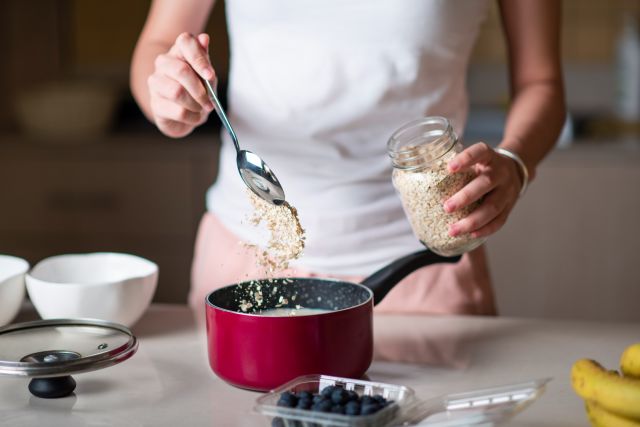Read any article or book about good nutrition, and you’ll end up reading about dietary fiber—and for good reason. An adequate amount of dietary fiber helps promote good digestion, regulate blood sugar and cholesterol levels, lower the risk of colorectal cancer, and promote a healthy gut microbiome, among other benefits.
Studies have found that many people with inflammatory bowel disease (IBD) consume less fiber than people who do not have IBD. Studies have also found that increasing fiber intake may have significant benefits for people with IBD, and adequate amounts of fiber may even help improve symptoms and reduce disease activity.
Here, we look at the two main types of dietary fiber—soluble and insoluble—and why it’s important for people with IBD to understand the difference.
Crohn’s Disease and UC
Inflammatory bowel disease (IBD) refers to a pair of chronic inflammatory disorders that affect the gastrointestinal (GI) tract, also called the digestive tract. While Crohn’s disease and UC are both IBD, it’s important to understand that they are different conditions that impact the body in different ways.
- Crohn’s disease can cause attacks or flares of inflammation anywhere in the GI tract—the mouth, throat, esophagus, stomach, small intestine, large intestine (colon), rectum, and anus. The most commonly affected areas are the colon and the ileum (the last part of the small intestine).
- Ulcerative colitis (UC) causes attacks or flares of inflammation that only occur in the colon and rectum.
Symptoms can include diarrhea, bloody stools, bleeding from the rectum, pain, weight loss, and fatigue. Both conditions can cause a number of long-term complications.
Soluble and insoluble fiber
Fiber is a nutrient—more specifically, a carbohydrate. Unlike many other types of carbohydrates, fiber is not broken down as it passes through the digestive system. It passes through undigested.
Dietary fiber comes in two main forms, soluble and insoluble:
- Soluble fiber dissolves in water (and during digestion). In the GI tract, it has a gel-like consistency, which helps add bulk to stool and slow down digestion. Some examples of foods that contain soluble fiber include oatmeal, beans, barley, peas, apples, and citrus fruits.
- Insoluble fiber does not dissolve as it passes through the GI tract, and it causes food to move more quickly through the digestive system. Whole wheat flours, nuts, potatoes, and green beans are some examples of foods that contain insoluble fiber.
A balanced diet should include both soluble and insoluble fibers, though the foods a person can tolerate will be different during an IBD flare.
Fiber intake during a flare
Flares, attacks, or episodes refer to times when symptoms get worse. Remission refers to times when symptoms go away, or at least become less severe. One key focus of treatment is to reduce the number of flares and increase the time symptoms are in remission. Medications and surgeries can help achieve this treatment goal. Nutrition is also an important focus of treatment.
People with IBD are advised to avoid insoluble fibers during flares. Insoluble fibers are rough on the digestive system and cause foods to move more quickly through the GI tract, and may contribute to symptoms like diarrhea, bloating, and cramping.
During a flare, people with IBD are advised to opt for lower-fiber foods (like bananas, cooked fruit, and cooked non-cruciferous vegetables), which are more easily digested but still contain important nutrients. Refined grains like oatmeal, white rice, and white pasta are all sources of fiber, and may be better tolerated than whole grains during a flare.
It's important to remember that IBD affects different people in different ways, and your best source of information will be a healthcare provider.
If you are living with IBD, one of the best things you can do is keep a record of the foods you eat and how you feel each day. This can help you and your healthcare provider identify foods that trigger symptoms, nutrients your diet is missing, and ways to get the most out of your treatment plan.







